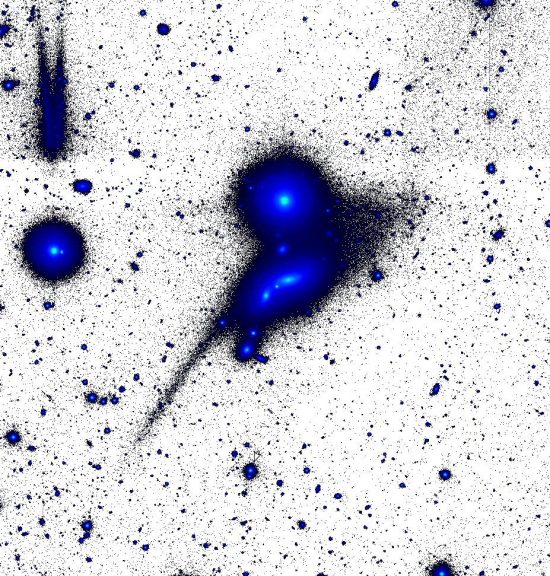
February 20, 2020
Energetic tails are common features in the Universe.
Celestial objects such as Centaurus A; hot-bright stars, planets, and comets, exhibit collimated jets or trailing emissions that are difficult to explain. Every new observation requires a new theoretical revision, or an admission of complete bafflement.
A group of galaxies called HCG098 is a case in point. Astronomers were shocked when X-ray and ultraviolet observations of a galaxy within the group indicated a long tail extending for 500,000 light-years. Naturally, the gravity Universe allows them to consider phenomena such as “crashing” and “disruption” as the only ways that the observation can make sense.
According to the study, the giant “tadpole” was produced by the disruption of a smaller dwarf galaxy. Gravitational forces pulling stars out of the subject galaxy formed the “head” of the tadpole, while stars left behind created the “tail.”
Investigators ignore explanations that involve the most all-pervasive component in the Universe, electrified plasma. Plasma makes up 99% of all that exists. In a plasma tube, electrons can be excited by the current flow into florescence and give off ultraviolet light. However, astrophysicists usually think that high-frequency emissions, like X-rays, are due to “bow shocks”, causing gas and dust to swirl around like the trail of smoke from a train or a steamship. They ignore plasma’s behavior.
Explaining the galaxy in HCG098, astronomers miss important clues about what is most likely causing its manifestations: electricity in Birkeland currents transmitted across vast distances in ionized plasmas.
Since wakes, contrails and smoke all spread out as they move away, the tail cannot be a mechanically produced phenomenon. It is highly organized along its entire light-years-long length into a twisted helix, indicating that it is probably Birkeland current filaments.
Stephen Smith
The Thunderbolts Picture of the Day is generously supported by the Mainwaring Archive Foundation.












